Sights and Activities
Below are the places we saw and activities completed while visiting El Salvador:
La Palma
Murals: there are several murals throughout this mountain village. In 1972, painter Fernando Llort moved to this small town and started a trend of these bright, primitive images of mountain villages, farmers, flora, and fauna that still represents El Salvador around the world. Llort taught local residents how to create the same images and today 75% of the village makes a living by mass-producing the art.
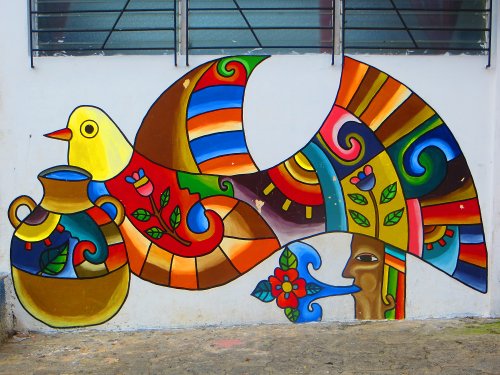
La Semilla de Dios: ‘The Seed of God’ is a local cooperative that was founded by Fernando Llort in 1977. It continues producing the renowned art products and exports to several countries. We were fortunate to be able to tour the workshop where the typical Salvadorian art is made.
Cerro El Pital: at 2730m (8957ft) this is the country’s highest peak. There is road access to the summit, but we decided to hike up from the nearest village. It took us a little over an hour and even though it was cloudy, we enjoyed the forested mountains.


Cinquera
This village was a former guerilla hideout and we visited this village hidden in the mountains, because it was featured in a documentary, “El Lugar Mas Pequeño” (The Smallest Place), that we watched years ago. The documentary was about the aftermath of the civil war in the country and narrated the horrific stories these residents had to endure. There was an elderly lady we remembered from the film that, after asking around, we were able to meet and chat with for a couple hours. We also spoke with other residents, including a former guerilla that was now working as a park ranger. We were very impressed how the local community has come around and rebounded by implementing several grassroots projects, including a museum, forest, and other tourist attractions.

Cinquera Forest: during the civil war, a span of about 12 years from the late 70’s to the early 90’s, this village was completely abandoned and during this time mother nature reforested itself. After the war, residents started to return and found a jungle in their backyard. Instead of deforesting, they decided to conserve it and turn it into a reserve. The area has a small river that traverses it and park rangers have built swimming holes. We hiked in the park for about 2 hours, but unfortunately were not prepared to go for a swim.

Suchitoto
Iglesia Santa Lucia: we were able to enter this beautiful colonial church that was built in 1853.
Lago Suchitlan: this reservoir was formed in 1976 with the creation of a hydroelectric plant. In the language Nahuat, Suchitlan means “place of flowers.” We walked down to the lake and to enjoyed the views.

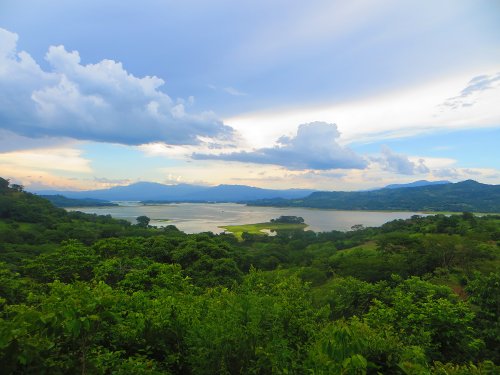
Centro Arte para la Paz: housed in an old Dominican convent, this art center had different art exhibits and a display on women around the world.
Cascada Los Tercios: this waterfall has unique volcanic rock formations as a backdrop. The rocks are in the shape of hexagonal spires and even though the water was dried out the formations were impressive.
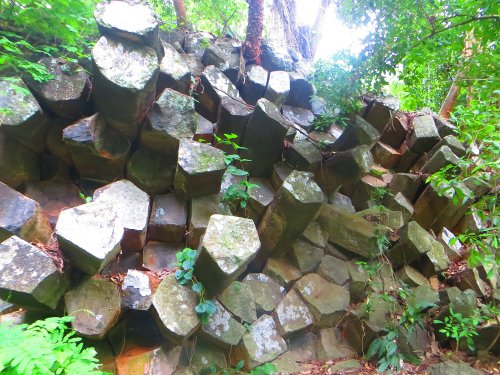
San Salvador
Planes de Rendero: we went to this hillside district at night where the famous pupusas (local dish) competed with the great views of the city.
Monumento al Divino Salvador del Mundo: this monument (Monument to the Divine Savior of the World) is a statue of Jesus Christ on top of Earth that sits on a concrete pedestal. It is a symbol that identifies and represents both El Salvador and Salvadorians throughout the world.

Museo Nacional de Antropologia David J Guzman: this anthropology museum has two floors of interesting exhibits on indigenous history, indigenous religious beliefs, indigenous burials, Salvadorian immigration, and different artwork.
Museo de Arte de El Salvador: this modern art museum displayed different type of paintings and sculptures.
El Arbol de Dios: this is Fernando Llort’s gallery, a painter that created the artwork that El Salvador is known for. The gallery houses an extensive collection of his work, including sophisticated pieces that differ from his simpler, better-known wood paintings.


Parque Bicentenario: this giant urban park was inaugurated in 2011 in commemoration of the bicentennial first independence movement of Central America. We strolled through the park for a couple of hours.
Ruinas de Tazumal: these Mayan ruins are located about an hour-and-a-half Northwest of San Salvador. In the K’iche’ language Tazumal means ‘pyramid where the victims were burned.’ Archaeologists estimate that the area was first settled around 5000 BC and believe that much of the ruins are still buried under the surrounding housing. Although this site is important for the country, it does not compare to other Mayan sites in other countries. It is believed that the temples in El Salvador are at the fringes of the Mayan civilization.
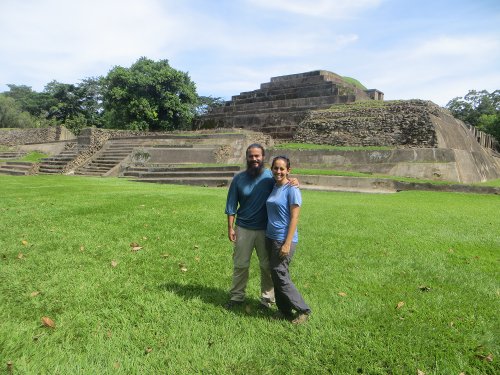
Barra de Santiago: we took a day trip to this bay formed by a thin peninsula with calm beaches and a protected mangrove forest. The peninsula is located near the Guatemalan border located about two hours West of San Salvador. After breakfast, we took a boat tour of the mangroves where we were able to see cayman. We then spent the rest of the day swimming, jet skiing, and enjoying the sun.
Los Chorros: this natural water park takes its name from the spring that creates several pools to swim. There have been some man-made upgrades to contain the water in the pools, but the setting is completely natural surrounded by forest. In addition to swimming, we took a short hike in a trail that overlooks the entire complex.
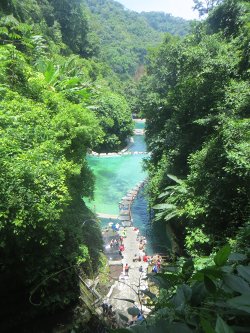
Lourdes
This is the town where most of Sal’s family resides, including his grandmother, aunt, uncle, cousins, and other distant relatives. We were able to spend several days with his family enjoying their company and of course to delicious meals. We would spend large periods of time chatting with grandma, his aunt, and his cousins. They were also able to take us on short visits to neighboring towns to taste the local food. We even were able to squeeze in a movie with the cousins.
Ruta de las Flores
We spent a day traveling through the “Flower Route,” known for the brightly colored colonial towns, gastronomical festivals, art galleries, waterfalls, and the country’s first coffee plantations. We visited the towns of Ataco and Nahuizalco. And walked amongst the ausoles (geysers) that bubble up with geothermal activity.
Morazan
We spent a few days visiting some friends in the department of Morazan. A predominantly farming region that is generating a sustainable, community-based nature and war tourism. We spent hours relaxing in our friend’s finca (ranch) in Cerro Pando amongst cool temperatures and various crops. We also took a hike to the highest point of their property where there were magnificent views of the surrounding mountains. Our friends took us on a day trip to Perquin, a village neighboring Honduras, where the guerilla stronghold received the most loyal support.
